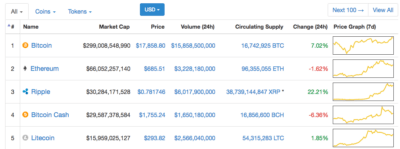Contents
So, there’s thought to be a natural demand for shares that returns in late October, in the case of the Q3 reporting season, and extends into early November. That just so happens to correspond to bullish seasonal trends that ensue during the back half of October. “Why are these seven days so strong?” said LPL Financial Chief Market Strategist Ryan Detrick in a research note. “Whether optimism over a coming new year, holiday spending, traders on vacation, institutions squaring up their books — or the holiday spirit — the bottom line is that bulls tend to believe in Santa.” That is, the markets tend to rise over a stretch of time right before and after the calendar flips to the new year.
- “Whether optimism over a coming new year, holiday spending, traders on vacation, institutions squaring up their books — or the holiday spirit — the bottom line is that bulls tend to believe in Santa.”
- According to data compiled by Stock Trader’s Almanac in the 70 years between 1950 and 2020, a Santa Claus rally has occurred 57 times and has, on average, seen the S&P 500 go up by 1.3%.
- Additionally, the market has gained during those days in 34 of the previous 45 years, or more than 75% of the time.
- It’s part of the earnings game each quarter that causes volatility on Wall Street.
For reference, the chart below compares the results of trading in any random six-day period in the past 26 years with the results of trading two kinds of six-day groupings. The first is the turn-of-month effect, four sessions at the end of a month and two sessions into the next month. The second is specifically the returns from trading the Santa Claus rally belief. Over the years, many analysts have tried to speculate about the reasons for the Santa Claus rally. The perceived causes for the rally include an overall, holiday-season spirit, in which retail traders hold an outsize bullish outlook and institutional players tend to step back from the market. The second major question is whether the Santa Claus rally really even exists.
Earnings calendar
Traders should be aware of the historical performance of the Santa Claus rally period, and remain wary of getting sucked in by hopes for momentary positive performance. Regardless of the reason, any positive return leading up to and after Christmas is likely to be hailed by the financial media as a “Santa Claus rally.” We would caution traders not to rely on a December Santa Claus rally as a reliable strategy for easy gains.
We believe the Santa Claus rally, if any does exist, occurs in the week preceding Dec. 24, not the week after after Christmas through Jan 2. Halloween strategy is a trading tactic, which posits that stocks perform better from Oct. 31 to May 1 than they do during the rest of the year. Observing the Santa Claus rally is one thing, but actually trying to profitably trade the so-called phenomenon is another matter. As with many market anomalies, the Santa Claus rally may just be random; there is no guarantee it will appear in the future.
According to The Wall Street Journal, historically, the S&P 500, the Dow Jones Industrial Average , and the Nasdaq Composite have risen about 80% of the time during the Santa Claus rally period. The average returns for the S&P 500, the Dow, and the Nasdaq Composite over the period have been 1.3%, 1.4%, and 1.8%, respectively. A share repurchase authorization within a quarterly earnings report is like a dessert after a big meal. The main course of top- and bottom-line numbers with a side of forward guidance capture much of the anticipation and attention, but this important corporate event can sometimes help drive a stock price higher.
Finance is the study and management of money, investments, and other instruments. Financial columnists and traders like to opine on the likelihood of a Santa Claus rally. Some cite economic and technical analysis, and others offer pure conjecture. Gordon Scott has been an active investor and technical analyst of securities, futures, forex, and penny stocks for 20+ years. He is a member of the Investopedia Financial Review Board and the co-author of Investing to Win. Screen for heightened risk individual and entities globally to help uncover hidden risks in business relationships and human networks.
Others insist that the Santa Claus Rally is related to increased holiday spending. In fact, some analysts suggest that strong retail spending is seen as an important economic indicator of economic growth and promotes bullish buying behavior as a result. High year-end sales figures have a tendency to drive retailer stock prices up in anticipation of good quarterly returns.
What Is A Santa Claus Rally?
All performance referenced is historical and is no guarantee of future results. Many individuals will see the most benefit from long-term investing in diversified mutual funds. For example, according to data compiled by LPL Research and FactSet, the Santa Claus rally period profitable moving average forex strategies in 1999 saw the S&P 500 drop 4% and the Dotcom bubble burst in 2000. Similarly, corresponding trading days in 2007 saw the S&P 500 drop 2.5%, and 2008 saw the Great Recession. Build a list of the best stocks to watch during holiday downtime or time off from work.

It is the end of the US tax year, when investors tend to sell some assets at a loss to claim relief on capital gains. Institutional investors go on holiday, leaving more traders in the market who are perhaps less cautious or informed. On top of that, there will be individuals investing their end-of-year bonuses, while prices can be moved more easily at a time when the volume of transactions in the market is quite low. Similarly in 2008, during the stock market crash caused by the financial crisis, stocks actually got a Santa Claus rally in the midst of a larger bear market rally. During the seven-day period, the S&P 500 gained 7.5%, although it would crash again in the first two months of 2009 before bottoming out on March 9.
LPL Financial Research
December is widely known as one of the best months of the year for stocks, but most don’t realize that the majority of the gains happen in the second half of the month. According to data compiled by Stock Trader’s Almanac in the 70 years between 1950 and 2020, a Santa Claus rally has occurred 57 if you can how millennials can get rich slowly times and has, on average, seen the S&P 500 go up by 1.3%. TJ Porter has over seven years of experience writing about investing, stocks, ETFs, banking, credit, and more. He has been published on well-known personal finance sites like Bankrate, Credit Karma, MoneyCrashers, DollarSprout, and more.
But traders will be hoping they can deal with all that next year, and that the tradition of the Santa rally continues. Worryingly for many investors, China has responded to a new coronavirus outbreak by locking down 13 million citizens, giving a sense of how the virus might still knock the economy. Experts have also cautioned that Omicron’s high transmissibility means it could still swamp hospitals. Sign up for our newsletter to get the inside scoop on what traders are talking about — delivered daily to your inbox. Securities and advisory services offered through LPL Financial , a registered investment advisor and broker-dealer (member FINRA/SIPC). More active investors, however, may want to make their portfolios more aggressive to try to make the most of the rally and use the appearance of the rally as an indicator for how to invest in the year ahead.

TJ has a bachelor’s in business administration from Northeastern University. Whether or not the market is up or down in December, remember that the market trend is always the biggest indicator you should follow when deciding to buy or sell. Investor’s Business Daily declares a Confirmed Uptrend when the market is in the best position for big gains. Learn more about how the market trend works and how you can find out the current trend.
Some believe that the rally is caused by the temporary bullish optimism of investors relaxing with family or from retail investors investing their holiday bonuses. There are also more general calendar trends called the ‘holiday effect’ or the ‘long-weekend effect’ where the stock market is theorized to perform better than average before holiday periods. This could be because lighter trading volumes during these periods make it easier for bullish investors to move the market.
Just because the Santa Claus rally does usually happen, and it often predicts the market the following year, that doesn’t mean it will continue to do so. If investors anticipate it, they are likely to behave differently, and market participants may adjust according to the expectation of a Santa Claus rally. I have no business relationship with any company whose stock is mentioned in this article.
Understanding the Santa Claus Rally
Trading bots definitely don’t get the blues when they go back to work on a Monday. Researchers have been identifying calendar effects in the stock market since at least the 1930s. October may have been the best month for US stock indices in more than a decade, but this does not mean investors should flick a switch from bearish to bullish, says Chaddy Kirbaj, vice director at Swissquote Bank Dubai. Bear markets typically end while the recession is only just getting going, as investors are forward-looking. Today’s has now run for just over 300 days, making it the longest since the global financial crisis.
“We have seen energy prices come down slowly, but this has been offset by rising food and shelter prices,” Mr Razaqzada adds. There are still plenty of things for investors to worry about, including the war in Ukraine, energy prices, yet more Covid-19 lockdowns in China, and the impact of higher living costs and mortgage rates on consumers. “Whether that slowdown in tightening will maintain a prolonged period of upside for stocks remains to be seen. But it has certainly lifted hopes of a festive end to the year for investors,” according to Mr Mahony. With that proviso, there are reasons to be optimistic that the recent market bounce may point to brighter times. Now could just be a good time to go shopping for stocks before they become more expensive.
Decisions, Decisions
In some years, the stock market has also declined sharply during the days in question. For example, from 2014 to 2015 the S&P 500 experienced a decline of 3.01% and from 2015 to 2016, that index declined by 2.27%. Using the week leading up to lexatrade Dec. 24 over two decades, we find there is no tangible or reliable Santa Claus rally. Whether you count that time period or the week after Dec. 25 up to Jan. 2 of the new year, the returns are negligible, if slightly positive at +0.385%.